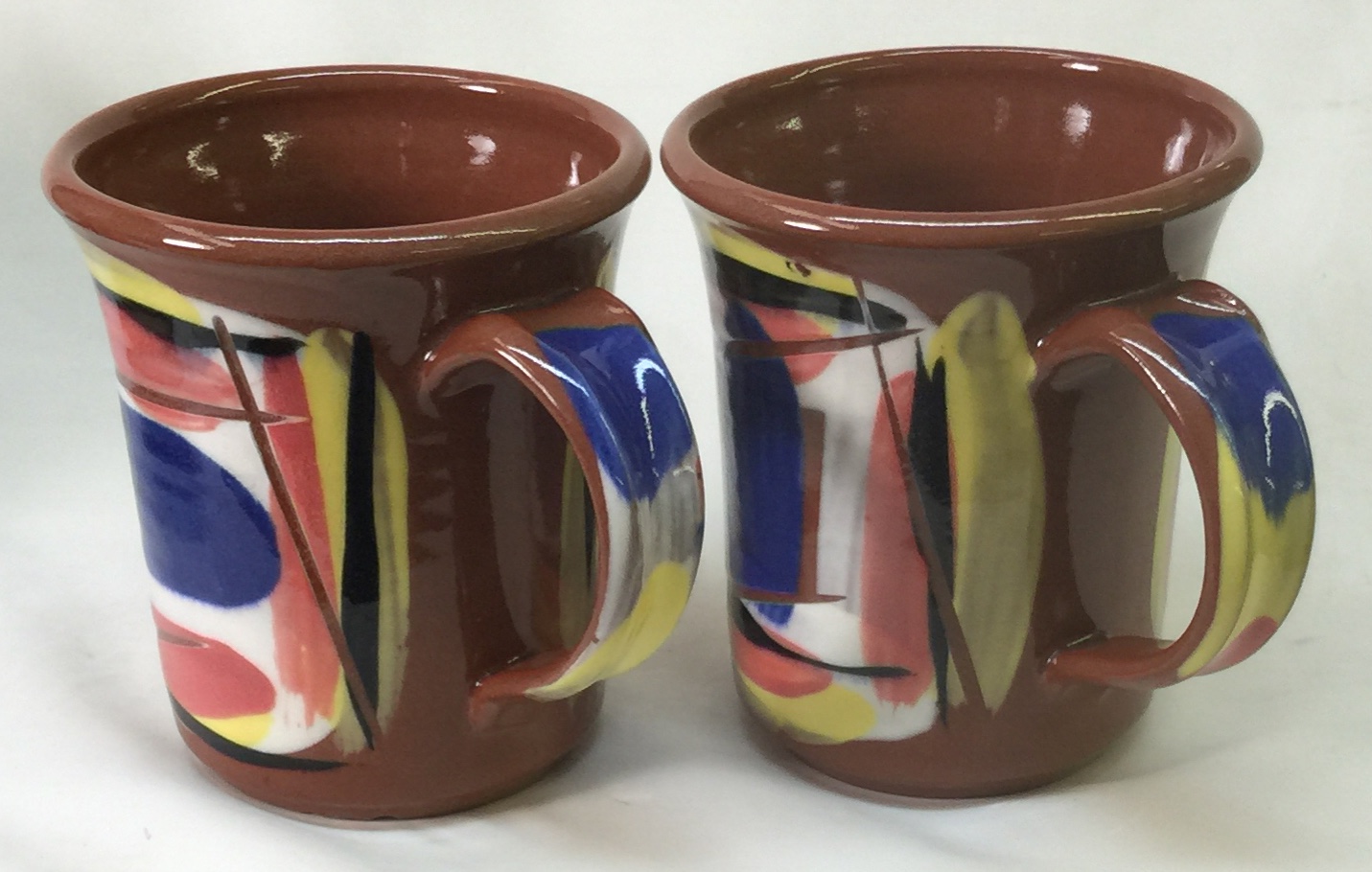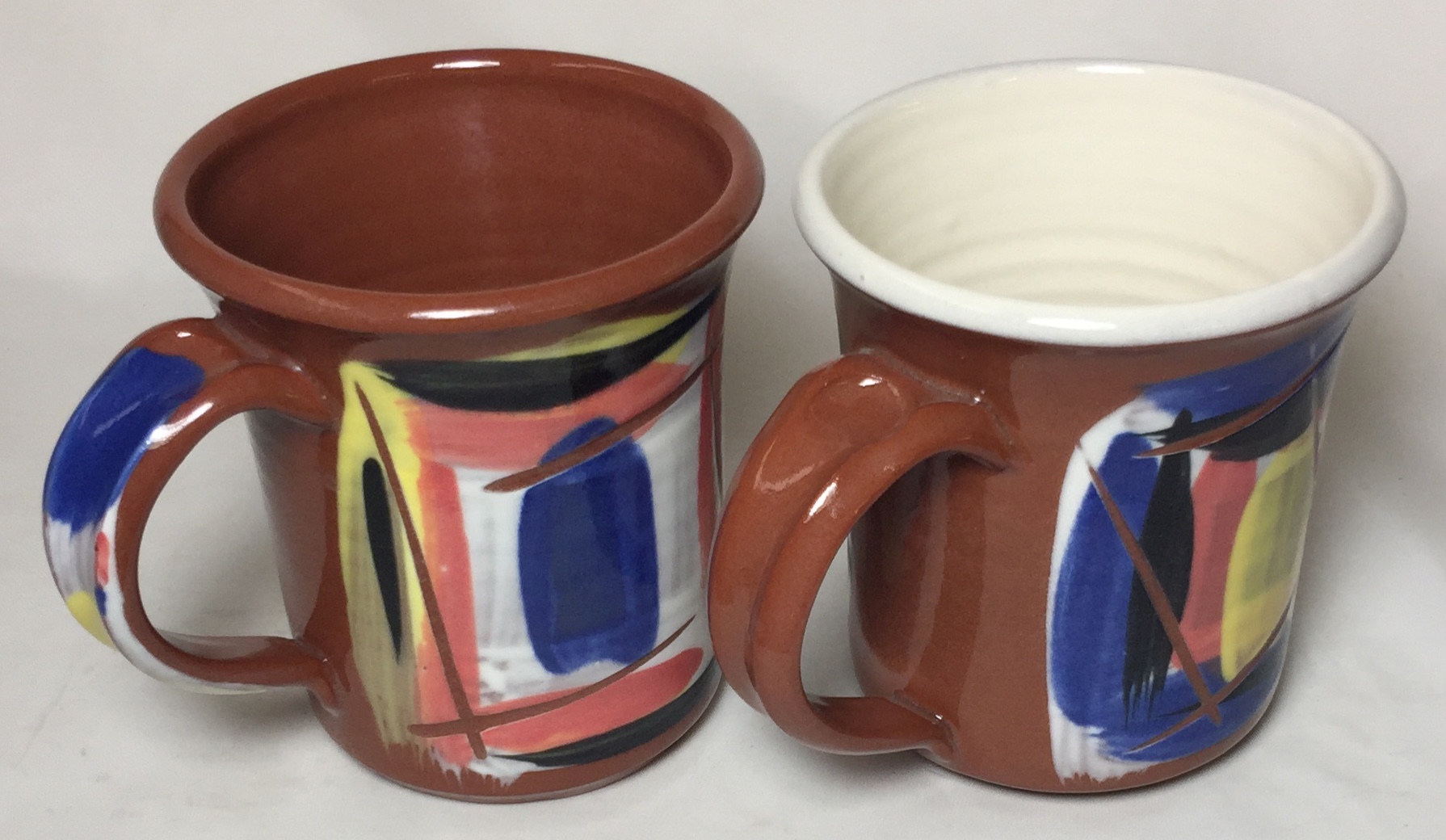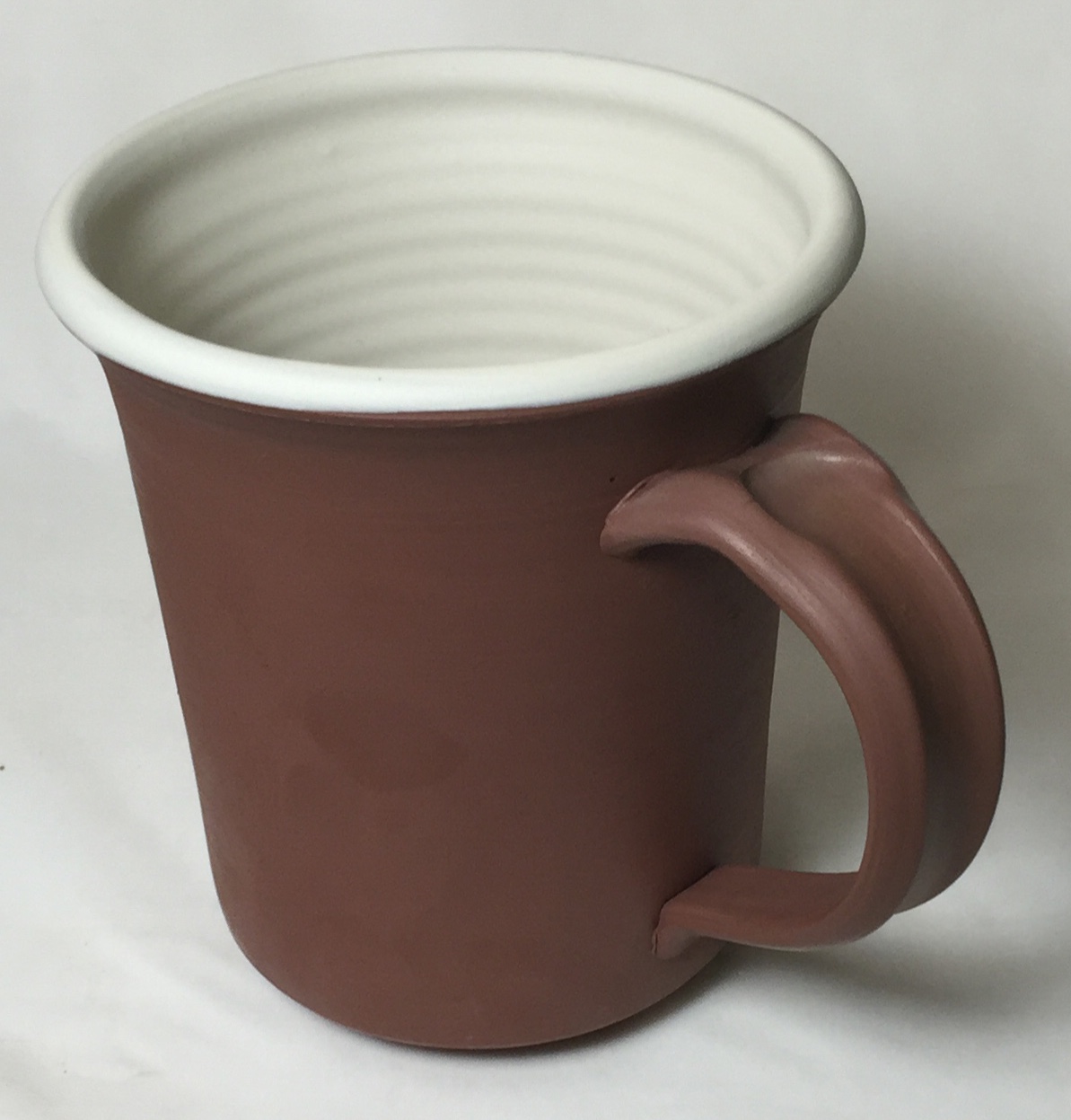Zero3 Stoneware
Description
Low temperature, smooth, very plastic, red-burning, refined, and fritted vitreous red burning functional stoneware. Plainsman does not manufacture this body at this time, but we did develop the recipe and provide it and support. People who used to use high temperature bodies will be most comfortable with this: Stoneware strength at thirteen cones lower! Saving energy. Putting less wear-and-tear on kiln elements. Doing more brightly colored brushwork (using standard commercial underglazes). A real ultra-clear overglaze that applies perfectly evenly by dipping and dries in seconds. And just as non-toxic.
People who used to do brightly colored terra cotta ware will have more difficulty adapting to this. Most are accustomed to tolerating weak, porous, completely non-functional ware (fired at 06) to get bright colors and warping resistance during firing. That is not what this is about. Zero3 IS NOT TERRACOTTA OR EARTHENWARE. It vitrifies (the clay color is thus darker). Vitreous bodies warp much more easily so extreme shapes are not for this. Ware fired on stilts will warp. This is called "Zero3" because it is fired at cone 03 (firing lower compromises strength, glaze fit, glaze melting, and transparency). If you try this body and glaze at 06-04 underglaze colors will appear muted because the overglaze goes cloudy. Firing underglaze colors without a clear overglaze should work well (firing more durable), any commercial underglaze rated for cone 06 should easily survive to 03 (underglazes from different manufacturers can melt very differently).
The Zero3 system employs frits in everything, so the body and glazes are more expensive. But the savings accrue elsewhere in the process (especially lower energy consumption and much less wear-and-tear on kiln elements).

Zero3 Stoneware mugs decorated with underglazes and finished with G2931K ultra clear glaze. By Tony Hansen.
Process Properties
The workflow in using the Zero3 system is different than for typical clay bodies. The creative effort is concentrated up to the leather hard stage, after that, it is a matter of drying, bisque firing, dipping in clear and final firing. Once you adapt to the workflow a production system could be implemented to ramp up production (unskilled labour could handle everything after leather hard).
Zero3 Stoneware is highly plastic and very, very slick and smooth. It does not generate large amounts of slip on throwing (as do many terra cottas). Drying is fairly slow (because of the high bentonite needed for the plasticity). Dry hardness is excellent. It works well with Zero3 white slip (when applied correctly), with commercial underglazes (at leather-hard stage) and it fits Zero3 clear glaze. Dry ware can be bisque fired to cone 010-06, dipped in the Zero3 clear and final-fired to cone 03.
For casting, drop out the bentonite. The barium is optional, to precipitate soluble salts.
The Zero3 Engobe finds its inspiration in the ceramic tile industry. Thousands of tons of white engobe are applied to tiles made from red or brown burning bodies, after pressing, to prepare them for glazing. This neutral surface enables the use of glazes of any color.
The engobe is not required in the Zero3 system, but like tile, it is employed for aesthetic or functional reasons. This engobe is normally applied to inside food surfaces of ware (made from the Zero3 body) and covered with the clear transparent Zero3 glaze after bisque firing. Do not use Zero3 Engobe on regular non-vitreous terracotta or white earthenware, its fired shrinkage is too high.
Although it is possible to apply this at the bisque stage, we recommend doing it at stiff leather-hard. Even coverage can normally only be achieved by dipping or pouring (if you plan to paint this on we recommend using a commercial white underglaze product instead).
Since this fires white, it can be applied to outer surfaces (by dipping) as a base on which to paint colored underglazes.
When properly gelled the Zero3 engobe slurry hangs on the leather-hard ware very well, does not run or drip and dries without flaking off. However, it also rewets the clay and thus sets back drying considerably. It is important that this be gelled after mixing so that it will hang on without producing runs and drips after dipping. We have found that equal parts of water and powder produce a specific gravity of about 1.4 and a little Epsom Salts will gel that so it will stop motion (and bounce back, called thixotropy) less than 2 seconds after stopping stirring. As you develop expertise in controlling the rheology of this slurry, you should be able to reduce its water content somewhat.
A drop or two of Dettol might be needed to store this for long periods (to prevent bacteria or mold).
Recipe info: The 20% silica helps match body thermal expansion and glaze fit. The 25% frit makes the fired hardness more closely match the body. Nepheline Syenite is included as a filler.
Firing
The firing schedule is important to getting a defect-free glaze surface, you can find it here.
Ware strength (and the higher price) comes from the added frit (which is a low melting glass that has been powderized), it melts and glues all particles into a strong matrix (for a white body to have the same strength at this temperature, three to four times the frit would be needed). This mechanism of vitrification permits higher porosity at a given strength.
The Zero3 body (and engobe), mature so low that even at bisque temperatures they have begun to vitrify. It is thus best to bisque fire ware at lower than normal temperatures, perhaps around cone 010 (otherwise ware will take too long to dry enough for handling). A workaround is to heat ware (to 200F for example) and then dip it in the clear glaze. The traditional bisque-higher-glaze-lower method is not needed here since the drop-and-hold step on the glaze firing schedule will clear bubbles in the glaze and heal surface defects.
Fired ware passes a 300F to ice-water to boiling water stress test without crazing or shivering (in our lab). Glazed ware has good resistance to thermal shock (when fired at cone 03).
Glazing
Crazing: Functional ware must remain craze-free (crazing is unsanitary and drastically reduces ware strength). Even though ware may not be crazed out-of-the kiln it may do so with time. Do cycles of a boiling water:ice water immersions (BWIW test) on a piece to test glaze fit (by stressing it to bring out any crazing or shivering tendencies).
Thixotropy: If you want the best application properties for one-coat dipping, consider creating a thixotropic slurry. Thixotropic glazes are creamy because they have been thinned and then gelled by the addition of a flocculant.
For slip decoration and engobes be careful to match the fired shrinkage of the slip with the body. Where we do not recommend a specific engobe recipe, consider one based on the body itself. Add 2% VeeGum or Bentonite (the extra stickiness helps it adhere well to leather hard ware). Be careful about adding fluxes (e.g. frit), this increases fired shrinkage creating a mismatch with body that can cause flaking (and can compromise engobe opacity).
If you want to develop and mix your own glazes and engobes consider getting an account at insight-live.com. You can organize a methodical development program and adopt better methods of testing (e.g. melt fluidity, thermal stress, slip-fit tests).
Recipe
For recipes for the body and glaze (and other information) click here.
Thermal Expansion
We do not supply thermal expansion values. If a chart is supplied here, please view it only as a way to compare one body with another. Please note that, although you may calculate the thermal expansion of a glaze, this cannot be done for clay bodies since they do not melt. The best way to fit glazes to clay bodies is by testing, evaluation, adjustment and retesting. For example, if a glaze crazes, adjust its recipe to bring the expansion down, fire a glazed piece and thermal stress it (using an IWCT test, 300F into ice-water). If it still crazes, repeat the process.
Physical Properties
Drying Shrinkage: 6.0%
Fired Shrinkage:
Cone 04: 4.5% Cone 03: 5.5 Cone 02: 7.0
Fired Absorption:
Cone 04: 6.0% Cone 03: 3.5-4.5 Cone 02: 2.0


